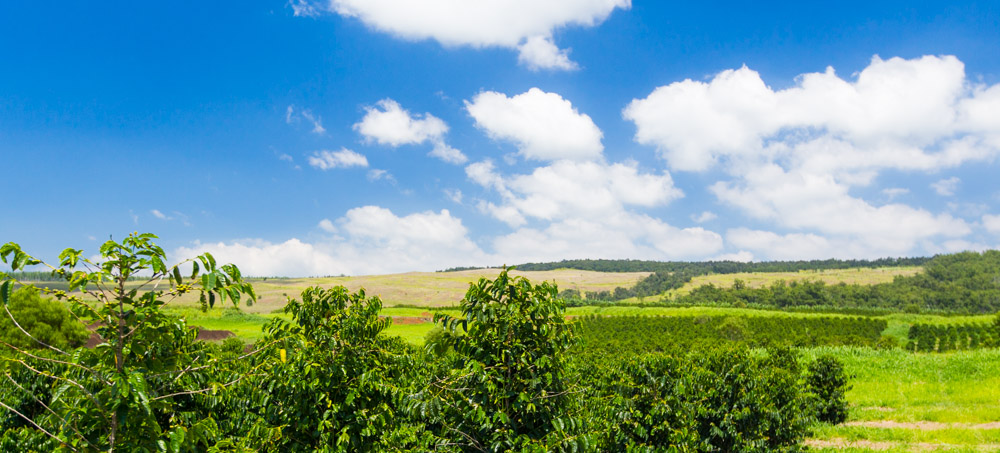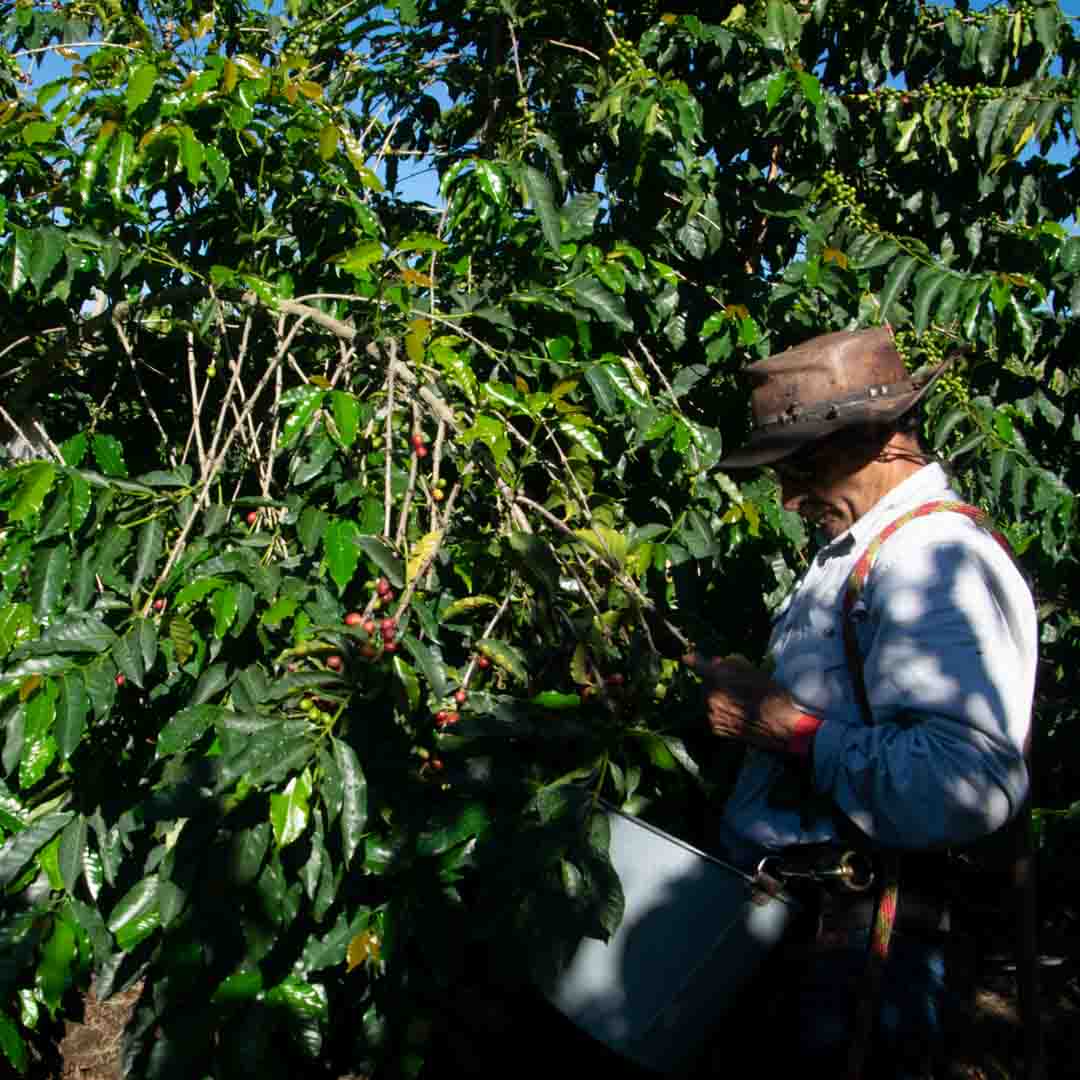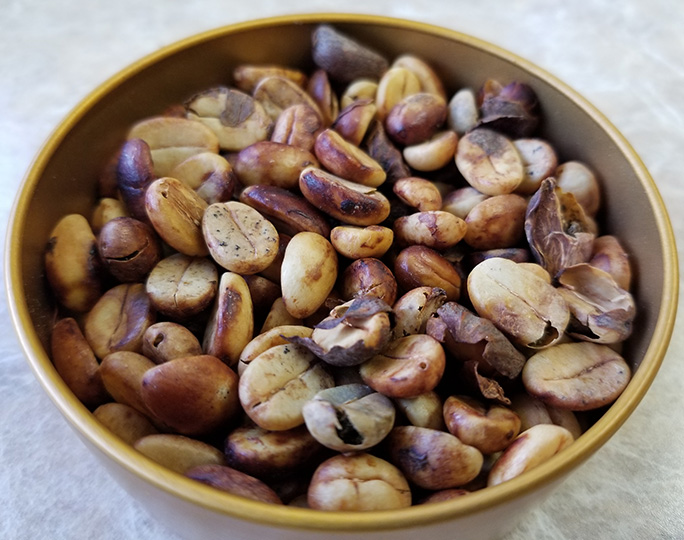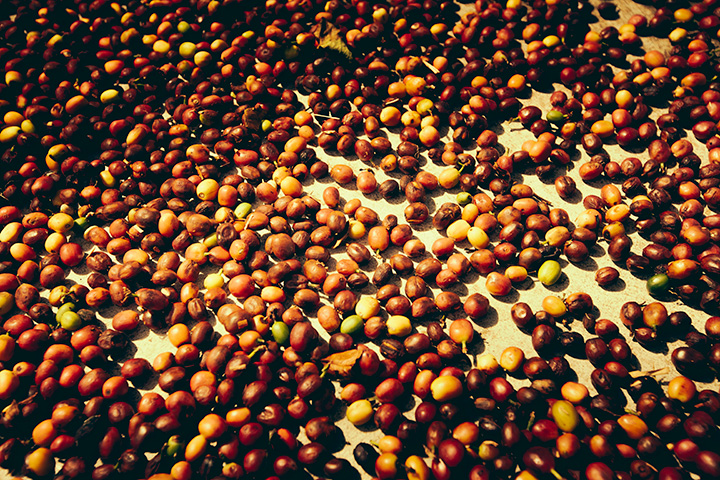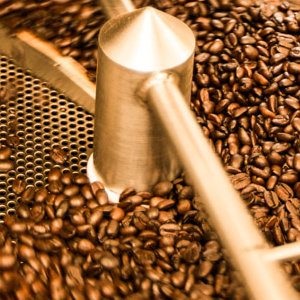Our Process
Growing
The district of Kaʻu on the Big Island of Hawaii spans the south side of the island from the Hawaii Volcanoes National Park on the East to Ka Lae or south point on the west. From Black sand beaches on the shore to the oft snow capped peak of Mauna Loa at 13,678′ this coffee growing region provides a unique climate for the growing of specialty coffee.
Most of the Coffee grown in Kaʻu is in a climatic band from 1,000′ to approximately 2,500′ above sea level. The climate and soils of the region have produced some of the best coffees in the world. Since entering coffee bean and cupping competitions in 2007 at the Specialty Coffee Association of America annual events Kaʻu has placed among the top ten coffees in the world. Why does Kaʻu coffee score so highly? The soils of the district are young volcanic ash deposits from nearby Kilauea volcano; they are well drained and acidic in nature which the coffee plants love. The climate of the region provides sunny hot mornings, then a characteristic cloud filled afternoon with light rains. Then at night the cold mountain air flows off of Mauna Loa towards the coast cooling the region and allowing the coffee plants to store energy and sugars within the ripening beans.
There are three major ‘terroirs” of coffee growing areas within the district. With alluring names like Cloud’s Rest, Pear Tree, and Wood Valley, these areas are cultivated by a group of enterprising local farmers. The total area in coffee with these regions is only about 600 acres however there are ongoing efforts to expand production n response to the world’s demand for this exceptional specialty coffee. Kaʻu Coffee has been described by cupping judges and connoisseurs as having “…Rich flavor, piquant acidity and intriguing hints of sweetness and spice, citrus and jasmine aroma, fresh butter undertones, hints of lime and currant, and a long spice finish…”
The producers of Kaʻu welcome visitors to the heritage town of Pahala where coffee fields grace the slopes above town. Just 25 miles south of Volcano National Park, please stop in for a taste of some of the finest coffee the island has to offer.
Harvesting
In order to ensure the highest levels of quality for our coffee, we harvest all of our coffee by hand using a team of skilled pickers. We utilize selective harvesting, picking only the ripest, reddest cherries. Immature cherries are left on the trees for future harvesting. This type of harvesting requires multiple harvests over the same areas and is very labor intensive. Hand harvesting raises our quality to the highest levels, not only for our customers but also to meet the demands of the specialty coffee industry. For the coffee to be complex in the cup, it is essential that the cherries have reached maturity when they are picked. We do not use mechanical harvesting primarily for its detrimental effect on quality. The resulting mixture of unripe and ripe cherries from mechanical harvesting has a huge impact on cup quality. Harvesting season begins in late Summer and continues through the Winter months and into early Spring. We truly believe that hand harvesting is a big part of the hands on process that make Ka’u coffee so unique and special around the world.
Processing
Washed
Bright aroma – delicate but authoritative. Rich and sweet acidity. Complex and balanced flavor with notes of plum and citrus. The classic fruit/floral aromatics lean toward chocolate in the aroma, fruit in the cup, and carry through cleanly into the long, sweet finish. Lingering aftertaste.
The washed process involves completely removing both the cherry and the mucilage from the outside of the parchment with the use of friction, fermentation and water.
The fruit of the coffee plant, known as the cherry, is picked once it ripens on the branch. Mature coffee cherries can manifest themselves in red, yellow and orange pigmentation. After being harvested, cherry is transported to washing stations where it is first weighed and then loaded into a depulping machine. The coffee cherry is then sliced open by either a metal or a sharp plastic blade. The two beans are pushed out of the cherry, which leaves the beans with mucilage as their outermost layer. Mucilage, composed of natural sugars and alcohols, plays a crucial role in developing the sweetness, acidity and overall flavor profile in the coffee beans. It is important in the washed process that all mucilage is removed from the bean which leaves only the flavor that developed in the cell structure of the bean prior to processing. In the washed process, the mucilage is removed either with fermentation or mechanically
Semi-Washed (aka honey process)
The washed process and the semi-washed process are very similar in the first step – the cherry is removed (pulped), but here the similarity ends. Semi-washed coffees are dried with the mucilage clinging to the outside of the parchment.
The fruit of the coffee plant, known as the cherry, is picked once it ripens on the branch. Mature coffee cherries can manifest themselves in red, yellow and orange pigmentation. After being harvested, cherries are transported to washing stations where they are first weighed and then loaded into a depulping machine. The coffee cherry is then sliced open by either a metal or sharp plastic blade. The beans are squeezed out of the cherry via centrifugal force. The semi-washed process, also known as pulped natural or honey coffee in some regions, begins with the depulping of the coffee cherry, the outermost layer of the coffee fruit.
The cherry can be pulped with a depulper, or with mechanical demucilagers. Mechanical demucilagers can be calibrated to alter the percentage of mucilage that remains intact on the beans. Mucilage, composed of natural sugars and alcohols, plays a crucial role in developing the sweetness, acidity and overall flavor profile in the coffee beans. Since mechanical demucilagers are a serious investment for coffee producers, the method (depulper or mechanical demucilager) that a producer uses is primarily determined by their financial means.
The parchment, with its layer of mucilage remaining, is taken directly to dry in the sun (skipping the fermentation tank and washing stage that occurs at this point in washed process coffee). Mechanical drying is not feasible for beans processed in this manner since the mucilage will stick to the walls of the drying machine and destroy the equipment. Instead it must be dried in the sun on patios or drying beds made of very flat, even surfaces. If any part of the drying surface is uneven, the producer runs the risk of allowing the mucilage to condense in one area of the bed and create rot that will harm the quality of the coffee.
Coffees that are only fermented for a very short amount of time, too short to remove the mucilage layer entirely from the outside of the parchment, are still considered semi-washed (see Indonesian Wet Hulling).
Drying is an extremely delicate process that must be attended to constantly. The beans must be rotated, usually by raking, to ensure that they dry evenly to avoid fermentation and rot. During the drying stage the remaining mucilage dries into the core of the bean changing the final flavor profile.
The parchment has a slightly mottled, red/brown appearance similar to caramelized sugar on the outside of a candied nut. The coffee beans are then stored and left to rest surrounded by the layer of parchment, or pergamino in Spanish, and dried mucilage until ready for shipment.
When processed properly, semi-washed coffees have an intense sweetness, heightened mouthfeel and rounded acidity.
Natural
Nice, fruity, winey taste with notes of cherry, strawberry, passion fruit and hibiscus with a spiciness of cinnamon, cloves and cedar then finished with a heavy body and tones of cocoa and molasses.
The natural process is the original manner in which coffee was processed. The cherries are dried with the beans inside, like drying a grape into a raisin. The beans are dried with all of their layers intact, including the coffee cherry and mucilage.
The fruit of the coffee plant, known as the cherry, is picked once it ripens on the branch. Mature coffee cherries can manifest themselves in red, yellow and orange pigmentation. In some coffee regions, such as southern Ethiopia, coffee cherries are picked at the same point of maturation as washed and semi-washed/honey/pulped natural coffees and brought to dry on patios or raised drying beds. Coffee beans are dried intact with all of their layers in this process including the coffee cherry and mucilage. The coffee cherry and mucilage are composed of sugars and alcohols, which play a role in the sweetness, acidity and overall flavor profile of the coffee. The fruit is a closed environment, which encourages natural fermentation (and sometimes rot) – helping create the final flavor profile. The fruit dries onto the parchment that surrounds the seeds. The coffee beans are left to rest inside the cherry pods before being peeled (hulled) and prepared for shipment. At this stage the cherry is the texture of fruit leather. The result is the dense heavy body and exotic, wild berry flavors that have become synonymous with natural processed coffees. However, the cup profiles of natural processed coffees can be inconsistent, so an intense analysis on the cupping table and in the lab is integral during the selection process.
Naturally processed coffees typically have heavier mouthfeel, lower acidity levels and intense, exotic flavor profiles.
Roasting
Our delicious, award winning Ka‘u coffee beans are fresh roasted daily to provide you with maximum freshness and flavor. We are continuously striving to perfect the art and craft of roasting by furthering our roasters’ knowledge of and skills in the history, fundamentals, and science of coffee roasting. The art of roasting is a lifetime learning process. We dedicate ourselves to perfecting this art for you, our customer.
We utilize a Diedrich CR50 100lb capacity drum roaster as our primary roaster, installed in May of 2013. We also use a Diedrich IR12 25lb capacity for smaller, custom batches. Both of our roasters are manually operated, nothing is automated or left to a machine in order to provide the best possible hand crafted roast. The roasting process is what produces the characteristic flavor of coffee by causing the green coffee beans to expand and to change in color, taste, smell, and density. There are many variables to consider while roasting and producing the finest cup of Ka‘u coffee: density of bean, moisture content, air and gas settings, and cooling time.
The exquisite and delicate taste of Ka‘u coffee is best roasted at a low heat, medium flavor profile. We produce sample batches, taking great care to cup each batch and develop the most suitable flavor profiles for each roast type offered. After carefully establishing roast profiles that were cupped and tested for each roast type, and based upon customer popularity and critical acclaim, we selected 4 exclusive roast profiles.
We believe our coffee is simply amazing. We encourage you to try it for yourself. But be prepared to indulge yourself often because you are going to love it!

